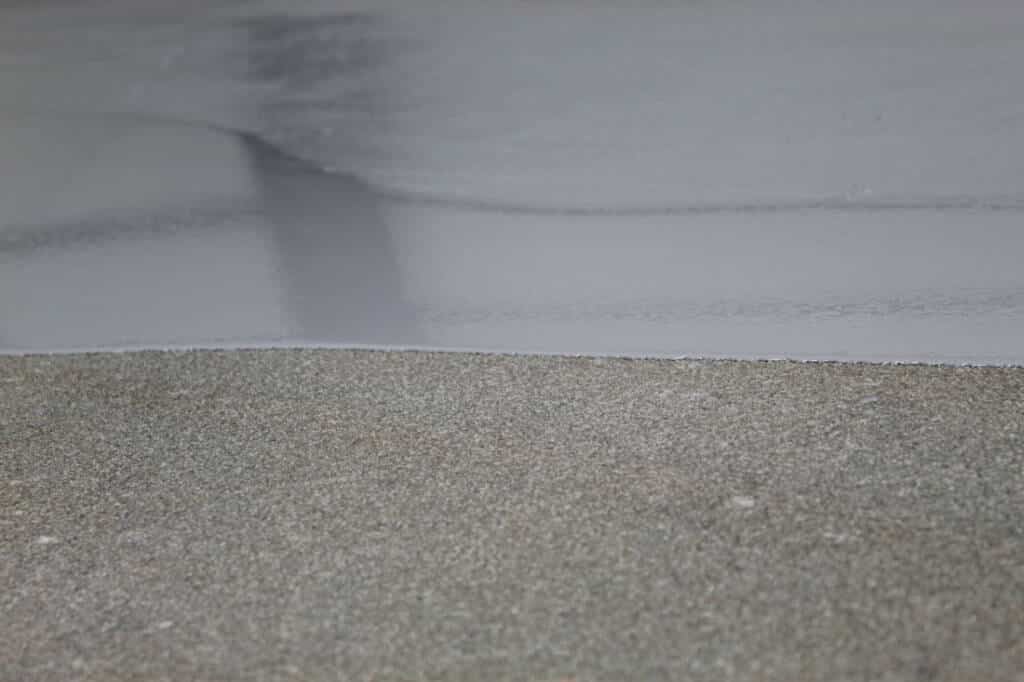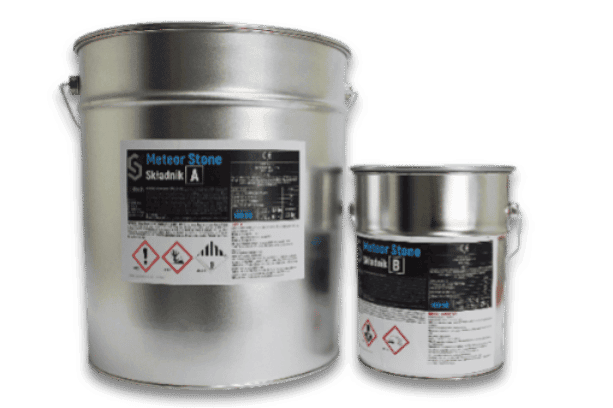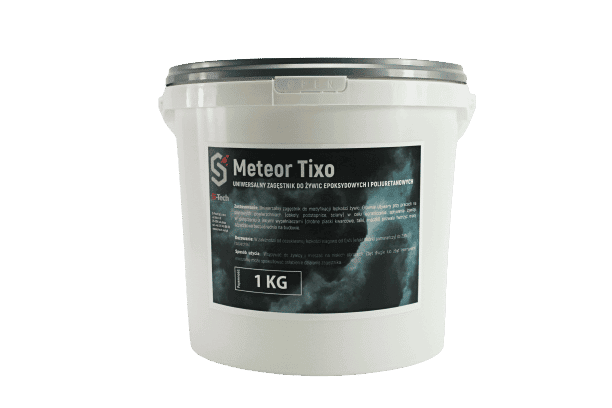
The fastest floor material to apply, which is characterized by high durability. Resin screed is ready for further work after just a few tens of minutes, so many construction and renovation teams are eager to use it. It is an extremely efficient and modern primer that provides a perfectly smooth surface ready for the application of, for example, an epoxy parking system.
WHAT IS A SCREED?
There are several types of this primer.
- The most popular is cement screed, which, in addition to its low price, is characterized by exceptional strength and versatility. As the name suggests – it is made of concrete and exhibits self-leveling characteristics. It is an excellent screed for tile floors or wood flooring.
- Another popular solution is gypsum wet screed. This is a similar type of screed to cementitious, although it dries just as quickly as resinous. Its disadvantage is that, due to its composition, it should not be used in rooms with high humidity, such as bathrooms, laundry rooms and kitchens.
- The next varieties of screed, namely magnesia and asphalt, are suitable for industrial premises. These are screeds with high hardness and resistance, which can be used even without the application of flooring. A good solution for manufacturing companies, warehouses and warehouses for various types of materials.
- Our specialty is resin floor screed, also known as epoxy screed, the last of the screed types. Durable and flexible at the same time, it is distinguished by its waterproof properties, which makes it ideal for a garage system, without the need for additional priming.
Types of screed. Dry versus wet screed – differences.
The difference is quite important. Drywall screed is actually layers of gypsum board, OSB, gypsum-fiber board or MFP. It is used most often during the renovation of existing buildings or where a traditional screed cannot be used. It is laid with several layers, removing the joints. It is an excellent way when adapting attics or converting non-residential premises into rooms or bedrooms. It should not be used in rooms with high humidity, unless it is specially protected with insulation layers and polyethylene film.
Wet screed is actually a screed that is recommended for use in new buildings. It is self-leveling and blends perfectly with the substrate. The choice of resin coating provides the right hardness and flexibility to fill the entire room thoroughly. Importantly, in addition to adhesion, the primer also has waterproof and soundproofing properties. For ideal results, an insulation layer of polystyrene foam or foil should be applied first. It is also necessary to use expansion foam that allows free deformation and proper distribution of the underlay.
How long does a screed take to dry?
It all depends on the type. By far the fastest drying is resin floating screed, which is also the most modern screed currently available on the market. If time is important, a gypsum underlayment is also a good choice, but it is not suitable for every room. Epoxy screed needs about 24 hours to fully cure, which makes it possible to start applying the target flooring system after this time. In addition, this screed is ideal for more absorbent substrates thanks to its very good penetration depth.
Surface preparation for screed
The mineral substrate should be of class min. C20/25, with a peel strength of min. 1.5 MPa. Before screeding or dry substrate, the surface must be completely dry. It should be cleaned beforehand from all particles of other materials (if necessary, grinded) and sanded if possible. The floor should then be primed with Meteor Primer Dry, Meteor Primer Hydro or Meteor Primer Rapid epoxy primer (the choice of priming resin should be selected depending on the needs and conditions). Before priming, the surface must be dusted off and degreased.
Resin screed is an excellent screed, which, in addition to the convenience of laying, is characterized by high resistance to mechanical damage. Resin screed prepared at the construction site is used to fill larger cavities and voids (more than 2 mm) in the concrete floor. Interestingly, such a coating can also be used to cover vertical surfaces or ceilings, but a universal thickener for epoxy and polyurethane resins Meteor Tixo, available in our offer, should be added to the mix.

Preparation of the mixture
The mixture ingredients and mixing ratios are in the table below:
| No. |
INGREDIENT |
QUANTITY |
VOLUME |
| 1. | Meteor Stone component A | 8,07 kg | about 49 litrów |
| 2. | Meteor Stone component B | 4,04 kg | |
| 3. | Quartz sand 1 – 1.6 mm | 25 kg | |
| 4. | Quartz sand 0,4 – 0,8 mm | 25 kg |
In a caster with a capacity of at least 60 liters, pour the weighed amount of Meteor Stone component A and component B and mix thoroughly. Stirring constantly, pour in sands starting from fractions of 1-1.6 mm. The resulting mixture has a consistency that is dense but wet and spreadable on the floor.
The mixture for filling vertical surfaces and ceilings should be prepared in the same way, adding Meteor Tixo thickening agent at a rate of 1 to 3%, depending on the desired effect.
Technical parameters
| No. | PARAMETER |
VALUE |
UNIT |
| 1. | Density | 1,27 | [g/cm³] |
| 2. | Shelf life at 20°C | 20-25 | [min] |
| 3. | Curing time | 24 | [h] |
Cleaning tools
Clean tools and any contamination freshly with acetone or other epoxy solvent. If cured, the resin can be removed only mechanically.
Storage
Store the resin and hardener in closed factory containers. Do not allow to freeze. Do not heat above +25°C.
Packaging
Metal cans (Components A and B)
25 kg paper bags (gravel)
Health and safety requirements
Some components of flooring compounds in their uncured state are harmful to health. In particularly sensitive people, they can cause allergies. Special precautions must be taken when performing the work. Premises where industrial flooring is prepared and executed must be well ventilated. Workers should use: clothes, shoes, goggles and protective gloves. Detailed safety rules are given in the Safety Data Sheets of the ingredients. Meteor epoxy flooring compounds after curing are physiologically inert to the human body.

 Meteor Stone - epoxy construction resin
Meteor Stone - epoxy construction resin  Meteor Tixo - universal thickener for epoxy and polyurethane resins
Meteor Tixo - universal thickener for epoxy and polyurethane resins